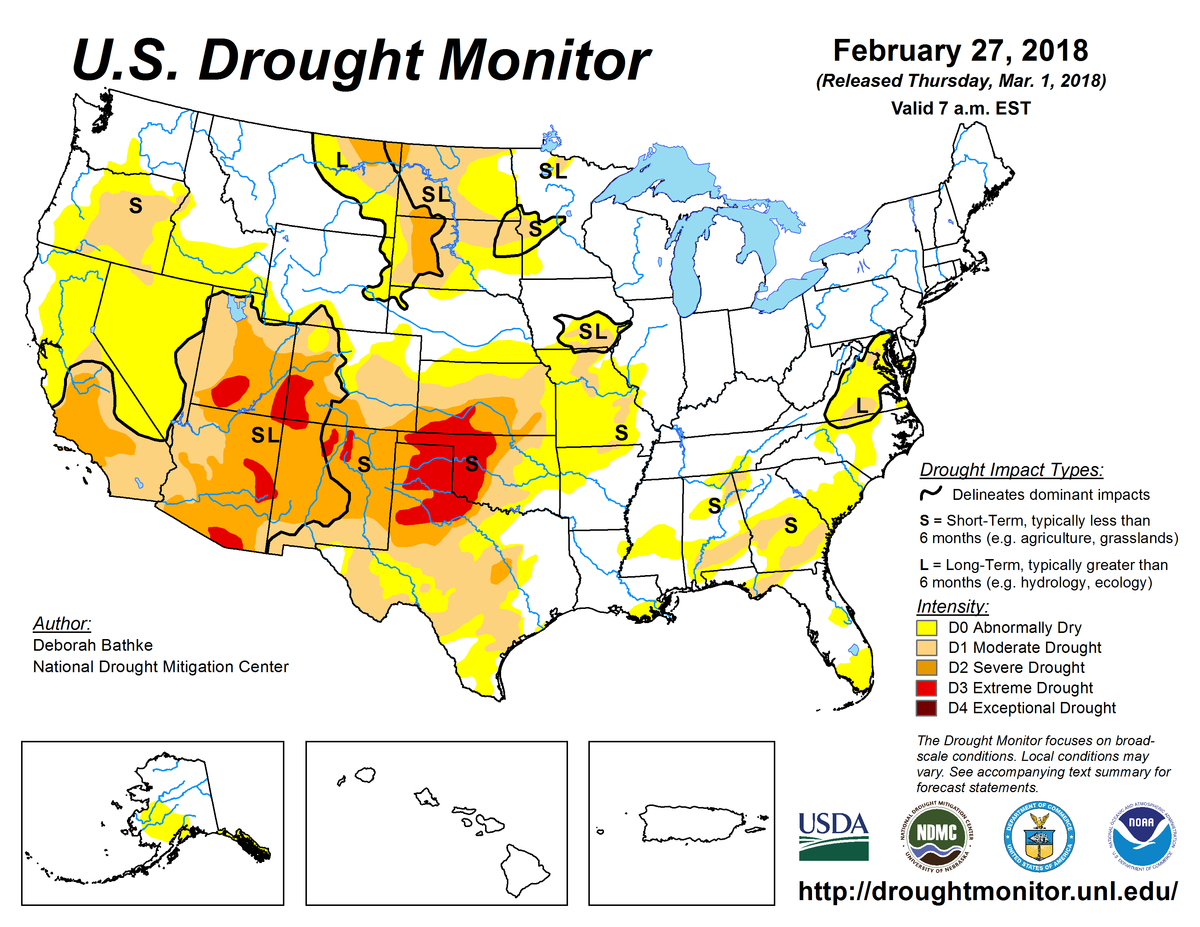
According to the February 27, 2018, U.S. Drought Monitor, moderate to extreme drought covers 31.3% of the contiguous United States, a decrease from last week’s 36.5%. Extreme drought held steady at 3.2% for a second week, while exceptional drought remained absent from the Nation for a 20th consecutive week.
The weather pattern during this U.S. Drought Monitor week was dominated by an upper-level trough over the West and upper-level ridge over the eastern contiguous United States. The trough brought cooler-than-normal weather across the West, but the circulation pattern moved Pacific weather systems into the region from the northwest, which resulted in a generally drier-than-normal week.
The western trough and eastern ridge set up a southwesterly flow across the middle part of the country. Cold fronts stalled out beneath this southwesterly pattern, and frequently stretched from the southern Plains to Northeast. And, the southwesterly flow drew Gulf of Mexico moisture into the central contiguous United States.
The combination of tropical moisture, stalled fronts, and upper-level weather disturbances moving in the southwesterly flow generated widespread heavy rains and flooding from eastern Texas to the Ohio Valley, along with outbreaks of severe weather. Some of the rain fell over drought and abnormally dry areas, resulting in contraction of the national drought footprint. Record to near-record warm temperatures occurred across much of the country east of the Mississippi River beneath the eastern ridge.
Abnormal dryness and drought are currently affecting nearly 119 million people across the United States—about 38.2% of the country’s population.

The full U.S. Drought Monitor weekly update is available from Drought.gov.
In addition to Drought.gov, you can find further information on the current drought as well as on this week’s Drought Monitor update at the National Drought Mitigation Center.
The most recent U.S. Drought Outlook is available from NOAA’s Climate Prediction Center and the U.S. Department of Agriculture provides information about the drought’s influence on crops and livestock.
For additional drought information, follow #DroughtMonitor on Facebook and Twitter.



